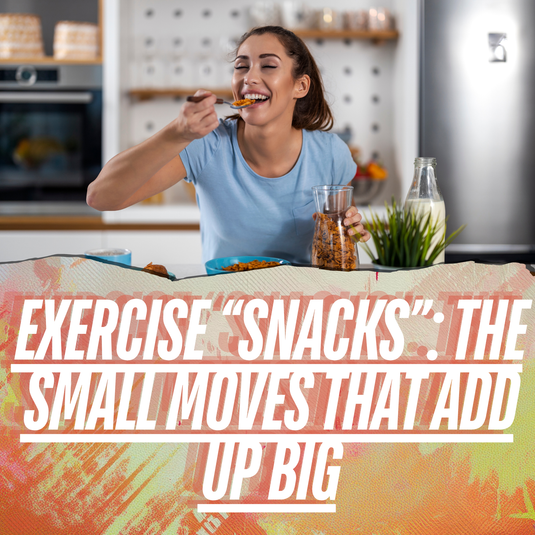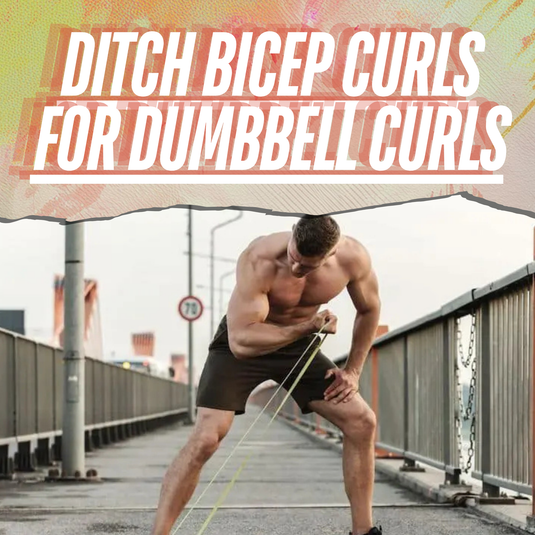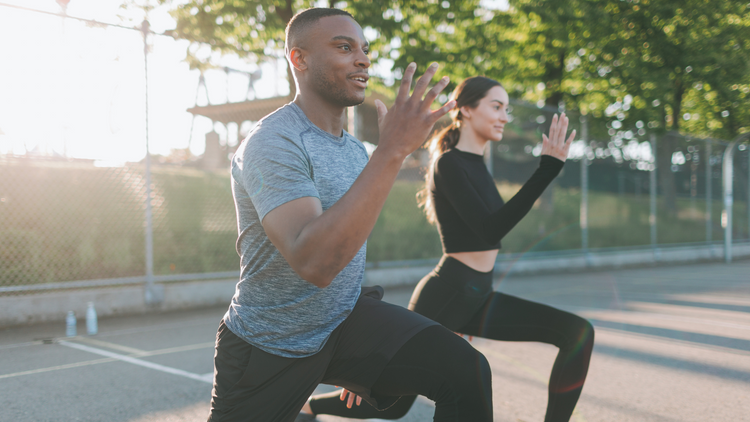Calisthenics Workout for Weight Loss

⏱️ Estimated Read Time: 6 minutes
🧠 TL;DR
- Calisthenics Workout for Weight Loss offers effective, accessible movements for targeted results.
- This guide is designed to help you move smarter, build strength, and stay consistent.
✍️ Summary
This post explores calisthenics workout for weight loss in a way that’s actionable and easy to follow. Whether you're new to this style of training or leveling up, it includes practical takeaways for your routine.
📚 Table of Contents
Humans are faced with so many different options when it comes to exercising the human body. Between old school weight lifting techniques and technology, the choices are almost unlimited; however, the one constant, regardless of the era, is bodyweight workouts. A calisthenics workout is infinitely scalable, is good for all levels and has applications for every person and every sport. Additionally, they require minimal investment financially! All you really need is a body, a plan, and some persistence and you will be well on your way to looking and feeling great in a body you love.
An argument can be made that all exercise will lead to ‘weight loss’, there are still many myths and misconceptions about what makes a particular type of workout better for weight loss as opposed to some other goal like strength, hypertrophy (muscle building), or skill acquisition. The truth is almost any type of training can be tailored to your specific needs or desires. To create a Bodyweight workout plan that focuses on weight loss, you should have a good, basic understanding of physiology and nutrition or hire a trainer that has such knowledge.
Weight loss is a multifactorial process, but you don’t have to understand each factor all to make that goal a reality for yourself. If you commit to a well-designed calisthenics workout plan for weight loss, focus on getting 7-8 hours of quality sleep at night, drink plenty of water, and strive to eat a whole foods-based diet that satisfies your daily caloric needs, you will have all the key pieces in place to make weight loss your reality. The exercises (and sample workout plan) in this article are some of the absolute best for weight loss, especially when done at the frequency, intensity and volume that is prescribed.
Getting 7-8 hours of quality sleep each night might sound like a pipedream for some of you, but with a proper plan in place, its achievable.
Here Are Some Recommended Steps for a Calisthenics Workout Routine for Weight Loss
-
Ascertain when you must be awake the next day. (let’s say 6am)
-
Subtract 8-9 hours from that wake-up time. (so, 9-10pm)
-
Set an alarm for 1 hour before that time (that would be 8 or 9 pm). That is when you will start getting ready for bed.
-
After this alarm has gone off, don’t look at your phone, computer, TV, or tablet anymore for the night. You can read, meditate, take a bath or whatever else helps you relax, but no screens!
If you stick to the above steps, you will start getting better sleep than you could ever imagine. (One last pro tip: try to wake up within a 1–2-hour window every day. That means not sleeping in too late on the weekends. If you feel tired during the day, take a nap but try to avoid varying your wake-up time more than hour or two at most. This will allow you to feel tired at night and fall asleep faster.)
Diet Is Important Part of Bodyweight Fat Loss Plan
Eating a wholefood-based diet may sound straightforward or confusing depending on your age and knowledge level when it comes to food and nutrition. The sad part is that nutrition has become much more complicated these days than it needs to be. There is so much information out there on what is “healthy” and what isn’t. The truth here is much simpler than we tend to make it.
When I say a “whole foods-based” diet, I mean exactly that. This just means that the majority (80-90%) of your food comes from either the ground, an animal, or a plant. It can be cooked whatever way you prefer. There is mixed information on the frequency of food but a good rule is 3-4 meals a day is ideal. The only ‘rule’ here is that you stick to the 80-90% part (the Whole Foods). This means that you can still have some ice cream or cookies, or chips and dip sometimes, but they should not be a whole meal’s worth of food.
As far as what foods to actually eat, I say experiment and find out what you like! There is NO such thing as the perfect diet and each one of us will have some foods that we love, and our bodies love but that taste horrible and cause digestive issues for the next person. Find what works for you and eat it! (Pro tip: Do your grocery shopping around the perimeter of the store. This is where the meat, vegetables and dairy products are. Avoid the inner aisles at the grocery store as much as possible, except for certain items that are on your list to pick up.)
Increase the Water Consumption For Body Fat Loss
It should be obvious that we need to drink plenty of high-quality water for general health reasons, but it’s even more important if weight loss is your goal. There are several reasons for this, but one of the main ones is that weight loss is a type of detoxification process. This means that you need the help of water to ‘flush’ the excess toxins from the body. The reason I say weight loss is a detox process is that our bodies, in their incredible wisdom, protect us by storing toxins in our fat tissue so that they are not circulating around in our bloodstream. When we lose or ‘burn’ fat, those toxins can re-enter the bloodstream and we need water to help flush those toxins through the liver for proper excretion.
My only recommendations when it comes to H20 intake is to always drink from glass, ceramic, or stainless steel. NEVER plastic! Plastic is a porous material that can contain remnants of other things such as soaps, toxins, and previous beverages. It is well worth your money to purchase a high-quality water filter so that you can get plenty of water each day without having to buy it from a store.
Now let’s start learning about the absolute best bodyweight calisthenics workouts for weight loss that almost anyone can start doing today! Whether you're looking for a calisthenics workout routine or a HIIT workout schedule for weight loss, these exercises are a great place to begin.
The Best Bodyweight Calisthenics Workouts for Weight Loss Are Listed Below Were Chosen For a Few Reasons:
- They require no equipment and can be done almost anywhere.
- They are reasonably easy to learn and there is little chance of injuring yourself while performing the movements.
- They use large muscle groups and/or many muscle groups at once. Both of which are
Key for an effective weight loss exercise program.
- They cover most of the basic human movement patterns: Push, Pull, Hinge, Squat, Crawl, Carry. (It is hard to do Pulling bodyweight exercises unless you have a pull-up bar or a suspension trainer system, i.e., TRX)
Reverse Lunge
The Reverse Lunge is an incredibly effective exercise when performed well. It is a staple in any calisthenics workout routine. It works all of the leg musculature while stretching the hip flexors which are chronically shortened, weak, and tight for most people today.
How to Perform Reverse Lunge:
-
Place hands on hips or keep your arms bent and elbows at your sides.
-
Shift weight to the right foot and engage core to keep the hips from tilting.
-
Reach back behind your body (about 2-3 feet depending on your height) with your left leg and place on the ground.
-
With most of the weight on your right leg bring your left knee straight down toward the ground. (Both knees should be bent about 90 degrees at this position).
-
Keep your torso upright but a slight forward lean is ok.
-
Pause slightly at the bottom with your knee hovering off the ground and then return to a standing position.
-
Switch legs each repetition or do all reps on one side before switching to the other.
Sets and Reps: Start with sets of 10 on each side. Do 2-3 sets. As you progress, do more repetitions each set or add a longer pause at the bottom position of each repetition.
Lateral Lunge
The Lateral Lunge works the lower body in the Frontal plane (left to right) which is very important for balancing the body and preventing injuries. Its requires both internal and external hip rotation, key joint motions in the hip most people struggle with.
How To Perform Lateral Lunge:
-
Step to your right (2-4 feet depending on your height) and place your foot flat on the floor with the toes facing slightly outward.
-
With your weight mostly on your right leg, push your hips behind you and to the right as if you’re trying to sit in a chair.
-
Keep your chest up and look straight ahead. Your hands can reach in front of you for balance if necessary.
-
Pause slight with the right thigh parallel to the floor and then press through the right hip and foot back to the starting position (standing).
-
Repeat on the other side or do all reps to one side before switching to the other.
Sets and Reps: Start with sets of 10 on each side. Do 2-3 sets. As you progress, do more repetitions each set or add a longer pause at the bottom position of each repetition.
Sit Through
The Sit Through is one of my favorite exercises. It’s a dynamic multi directional movement that emphasizes rotation and full body stability. It works the shoulders, core, adductors, and abductors (important stabilizing muscles on the inner and outer upper leg).
How To Perform Sit Through:
-
Start in a prone position with both feet and both hands on the floor, knees bent about 90 degrees and back flat.
-
Put all your weight on your right hand, lift your left arm off the floor while simultaneously rotating your hips to the left. The left foot remains on the ground.
-
Reach your right leg across and through to the left, keep your leg straight and point your toes. At the same time pull your left elbow behind your torso.
-
Pull your right leg back across and through and place the right foot and left hand back on the floor.
-
Repeat the movement in the opposite direction. (Lift right hand and left leg).
Sets and Reps: Start with sets of 10 on each side. Do 2-3 sets. As you progress, do more repetitions each set or add a longer pause at the bottom position of each repetition.
Push-Ups
There might not be a more iconic bodyweight exercise than the Push-up. It’s an incredibly simple but powerful movement that is a full body exercise! In essence, this is a moving vertical plank which either isometrically or dynamically engages the whole body. There are dozens of variations of the push-up, but I will cover the most basic version here.
How To Perform Push-Ups:
-
Place hands directly beneath your shoulders with your fingers facing straight forward or slightly inward. Spread your fingers wide.
-
Straighten your arms and place your feet on the ground with legs straight. Feet can be squeezed together or 6-12 inches apart for better balance.
-
You are now in a plank position with the body in a straight line from head to toe. Squeeze the glutes, thighs, and core for the durations of the movement to maintain this position and stability through the hips and spine.
-
Begin to lower your whole body towards the ground with control. Your chin, chest and thighs should all touch the ground at the same time.
-
While squeezing glutes, thighs and core press the whole body back up to a plank position.
-
During the lowering phase of the exercise the body must travel slightly forward for the shoulders to be able to fully rotate. This activates the chest muscles fully.
Sets and Reps: Start with sets of 10. Do 2-3 sets. As you progress, do more repetitions each set or add a longer pause at the bottom position of each repetition.
Jump Squats
Jump Squats are a dynamic, ballistic motion that is a progression of the typical air squat. If you are not ready for this one, stick with the air squat but if you are, follow the steps below:
How to Perform Jump Squats
-
Begin standing with your feet about shoulder width apart or a little wider, toes pointed slightly out and hands on the hips
-
To start the movement, brace your core and push your hips behinds you like were trying to sit down on a chair.
-
While keeping your chest up and shoulders back and flat, lower until your thighs are about parallel to the ground.
-
Push through the feet and the hips (squeeze your glutes) to forcefully propel your body upward. Your feet should slightly leave the ground (1-2 inches is fine).
-
As soon as your feet hit the ground again, push your hips back and begin lowering into the next repetition.
-
To make this exercise more difficult, jump higher each rep. To make this exercise easier, do not jump at all. Instead, simply raise up on to your toes before descending back down to your heels and into the next squat.
Sets and Reps: Start with sets of 10. Do 2-3 sets. As you progress, do more repetitions each set or add a longer pause at the bottom position of each repetition or jump higher.
Mountain Climbers
The mountain climber should look like marching from a high plank position. The goal is to maintain a tight core and work the knees in without them touching the ground. This can be done slow and controlled for beginners or dynamically for more advanced movers.
How to Perform Mountain Climber
-
Begin in a plank position with the hands directly under the shoulders, fingers spread wide and feet about 6-12 inches apart.
-
Bring your right foot up and place it on the ground with your right leg bent about 90 degrees.
-
Brace your core and drive your left leg up while simultaneously driving your right leg back. Your left leg will be bent 90 degrees now and your right leg will be straight.
-
Continue alternating which foot is forward in this fashion. Try to avoid letting the hips come up in the air. The body should remain relatively in a straight line throughout the exercise.
-
This movement can be done quickly or very slowly depending on the abilities or preferences of the individual.
Sets and Reps: Start with sets of 10 reps on each side. Do 2-3 sets. As you progress do more repetitions each set or quicken the pace of the movement.
Single-Leg RDL (Romanian Deadlift)
The single-leg RDL is an exercise that builds balance, coordination, strength, and mobility all at once. For these reasons it is a great addition to our routine.
How to Perform Single-leg RDL (Romanian Deadlift)
-
Begin standing with our feet a few inches apart. Shift your weight on to your right foot and lift your left foot off the ground, knee bent to about 90 degrees.
-
Keeping your right knee slightly bent (do not lock it out), begin to hinge at the hips and tilt your upper body toward the ground.
-
Reach your left leg back behind you to counter-balance your weight. Point the toes of your left foot toward the floor and reach the heal toward the wall behind you.
-
The hands can remain on the hips during the movement or can reach toward the toes of the right foot.
-
Keep the core engaged, back flat, and hips level throughout the movement. Go slowly to control the movement and to improve your balance.
-
Once the back is about parallel to the floor, pull the left knee and leg back under the body and straighten into a standing position.
-
Switch which leg you are standing on and repeat on the other side.
Sets and Reps: Start with 5-10 on each side. Do 2-3 sets. As you progress add more reps each set, reach your hands forward instead of down and straighten your back leg all the way each rep.
Dive Bomber Push-ups
Dive bomber push-ups integrate shoulder rotation and scapula control with full body movement. Imagine the task of having to crawl under a fence and you have the gist of a dive bomber pushup. They can take some practice to get the technique down, but the movements learned while doing this will carry over to many other exercises, so it is well worth your time.
How to Perform Dive bomber Push-Ups
-
Begin in a “Down-dog” position with your hands and feet a little wider than shoulder width apart, fingers spread wide and hips high in the air.
-
The back (spine) should be straight from your hips to your head and the knees should be slightly bent.
-
Start the movement by “diving” your torso slightly forward and toward the ground. As your chin and chest get close to the ground, begin pushing your torso up while pushing your hips low so that they’re hovering slightly off the ground.
-
You will be in an “Up-dog” position at the bottom of this movement.
-
Return to the starting posting by using your core to lift your hips and pressing firmly through your hands and shoulders.
Sets and Reps: Start with sets of 10 repetitions. Do 2-3 sets. Start by doing this movement slowly until you can control the movement. As you progress you can go through the movements quicker and through greater ranges of motion.
Reverse Plank
The Reverse Plank is a vital exercise for core strength and shoulder strength and mobility. Incorporating this exercise will help balance out many of the other pushing exercises.
How to Perform Reverse Plank
-
Begin by sitting on the floor with your legs straight in front of you. Keep your toes pointed straight up at the ceiling throughout the exercise.
-
Place the hands behind the torso, fingers pointed towards the toes, if possible, but you can point them to the sides or toward your head if that is more comfortable on your shoulders.
-
Press through the hands while also squeezing the glutes to raise the hips off the ground.
-
Lift the hips as high as you can, forming a straight line from the ankles through the head.
-
Keep your chin slightly tucked and look toward your toes.
-
Hold this straight-line plank position for as long as you can before returning to the starting seated position.
Sets and Reps: Start with holds of 10-20 seconds. Do 3-4 sets. As you progress add time to each hold and/or add sets.
Crawling
Crawling is a fundamental human movement pattern. It has tremendous benefits for aligning and strengthening the shoulders, hips, core, back and ankles. A few minutes of crawling each day can do wonders for improving our mobility, decreasing joint pain, strengthening our entire body, while also helping us lose excess body fat! It’s truly a do-it-all exercise.
How to do Crawling:
-
Begin in a quadruped position with hands under the shoulders, feet, and knees on the ground with the legs about shoulder width apart.
-
Start by pushing through the hands and shoulders and raising the knees off the ground.
-
Lift the right hand and left leg and reach each forward about 12-18 inches. Place the right hand and left leg back on the ground.
-
Lift the opposite hand and leg (left hand and right leg) and reach forward 12-18 inches.
-
Keep repeating this movement to create a “crawling” pattern.
-
You can also reverse the movement to go in the opposite direction.
Sets and Reps: Start by just learning the movement pattern. It’s fine to rest on your knees while you are learning this movement. Work up to crawling forward and backward for 30-60 seconds at a time. Do 2-4 sets.
Sample Templates for Bodyweight Workouts for Weight Loss: Below are a couple sample workouts that utilize the Bodyweight exercises outlined above. Each workout can be done once or twice per week, ideally with a day of rest in between. Incorporate plenty of walking on the rest days to improve your recovery.
Helpful Resources:
",
Want more guidance? Check out our Weekly Dumbbell Workout #1.
📝 FAQs
How often should I do these exercises? +
2–3 times per week is a good starting point for most people.
Do I need equipment? +
Many of these can be done with just your bodyweight or a single kettlebell or dumbbell.
Can beginners do these routines? +
Yes! These movements are designed to scale with your fitness level.






